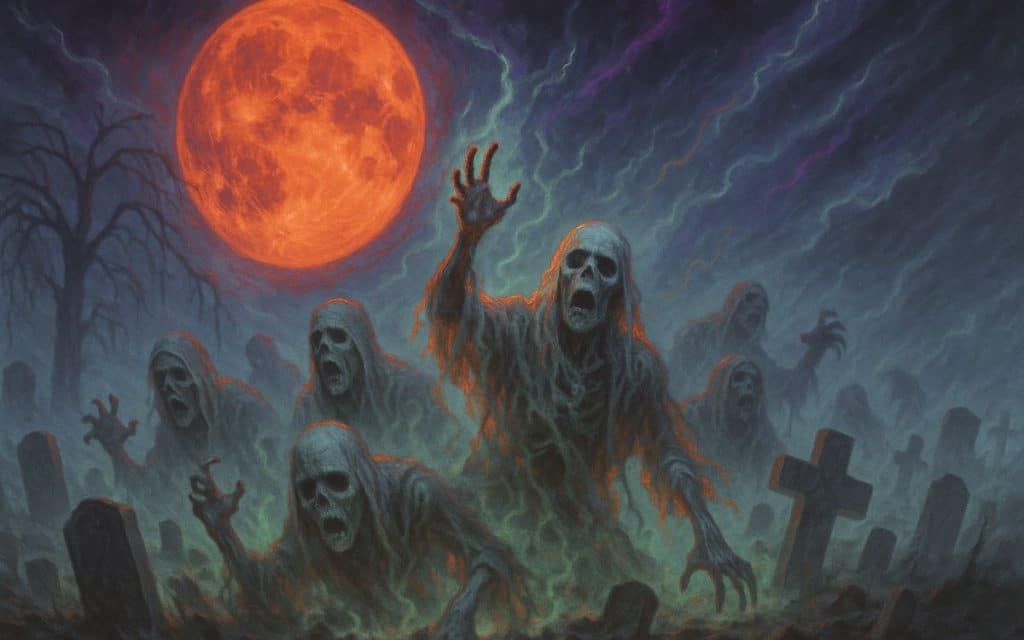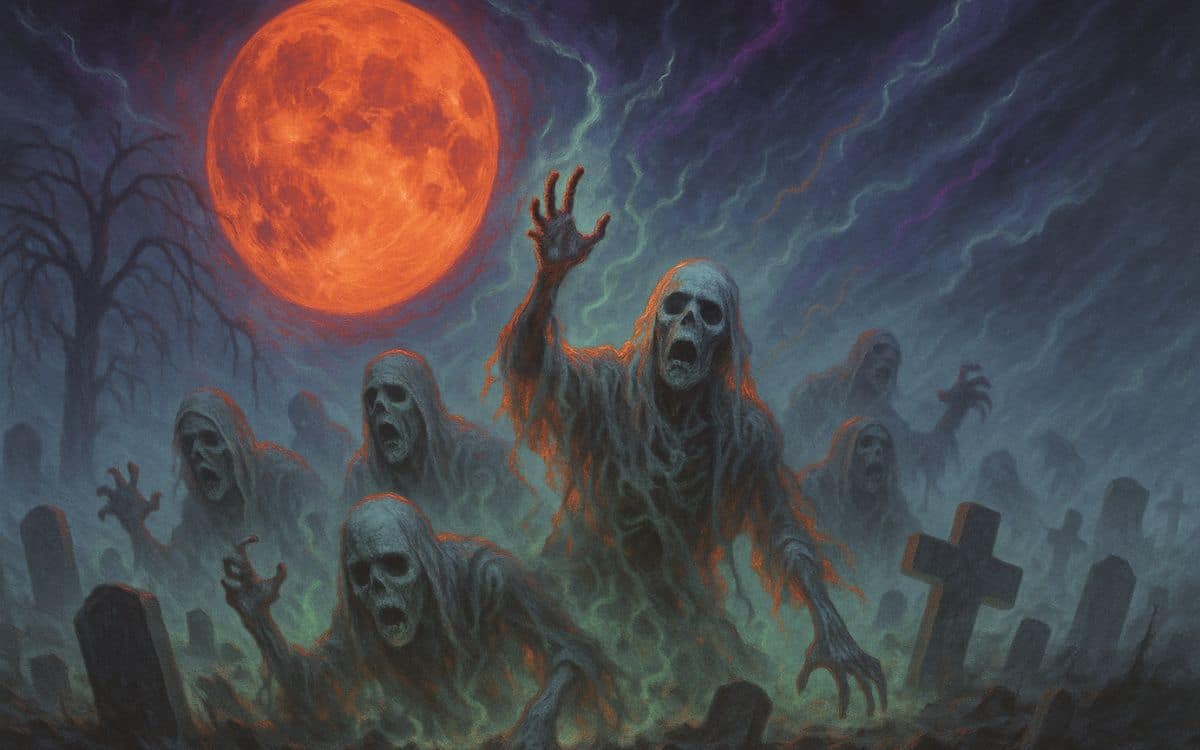Thomas Parnell’s A Night-Piece on Death reveals how death, decay, and nature merge in the eerie roots of Gothic poetry, writes WILLIAM BOVE
These graves with bending osier (Eurasian willow tree) bound
That nameless have crumbled to the ground
Ha! while I gaze, pale Cynthia fades,
The bursting earth unveils the shades
All slow and wan, and wrapped in shrouds,
They rise in visionary crowds,
And all with sober accent cry,
“Think, mortal, what it is to die.”
“It sends a peal of hollow groans,
Thus speaking from among the bones.”
This is a sample of the poem A Night-Piece on Death by the first Graveyard Poet, Thomas Parnell.
Parnell was the first of the Graveyard Poets from the School of Graveyard Poetry.
He was born in 1679 and lived until 1718. His poem wasn’t published until 1722.
Fitting, in a macabre way, that his poem about death wasn’t published until after he died.
There were four men who were well known as the first Graveyard Poets. These four gave rise to Graveyard Poetry and aided in giving birth to the Gothic Romantic period—as well as its poets and authors.
The Graveyard Poets dealt in death, graves, cemeteries, skulls, bones, worms, decay, and coffins.
They spoke highly of the morality of the grave and the connection shared between mortality and nature.
Nature will have its soul, and will have each one of ours.
We are beckoned by it, hungered after about it, and finally consumed in nature’s due.
The Graveyard Poets make it a point—or at least Thomas Parnell made it a grand point—to state the spirit of memento mori (remember you must die).
In this piece, Parnell lets us know first-hand that nature stands vigil at our death.
Though it may bend, it does not crumble and fade to the earth as we do, but maintains a constant guard—a witness to our terrible and yet inevitable decay.
The line “pale Cynthia fades” is a reference to the moon.
“The bursting earth unveils the shades all slow and wan, and wrapped in shrouds. They rise in visionary crowds, and all sober with accent cry.”
Shadows engulf the area and life grows thin and wrapped in death shrouds. Life is darkening, and the body is ready to die and be committed to the grave.
“Think, mortal, what it is to die.”
“It sends a peal of hollow groans,
Thus speaking from among the bones.”
Visionary crowds, all sober with accent cry.
A great and sudden release of life. A wail as death is approaching. One final booming release of life—and then the end takes us.

The outcry is important to observe, as it is at this final point that life transitions to death.
An important aspect of life that gives death and the grave so much symbolic meaning in our final end.
Our soul leaves, we return to the earth, and we greet death.
It sends a peal of hollow groans.
The final throes of death that give way to a stream of cackles, moans, and wretched groaning.
Death rattles are an eerie and cherished part of this poem.
These lines are a celebration of death, which is as important as it is to celebrate life.
“Thus speaking from among the bones.”
Even in death, there is a place to communicate with the living.
A way to speak to us from beyond the grave—and perhaps with it, the means to connect to the afterlife.
Grave markers, the state of graves, and the decay of the body can speak to us of death in this world.
But in knowing, we must share a connection with something greater than ourselves.
We have an overpowering desire to engage in some form of congress with the land of the dead.
Perhaps this longing and yearning is our way of achieving the immortality we deserve.
The answers to everything, and the means to explore them.
Or it could just be a delicious celebration of the Gothic, the macabre, and the eerie quality of the dead and the grave.
All things irresistible to our fertile and eager imagination.
Things the Graveyard Poets knew all too well and were most eager to feed.
Leaving us with more than just an entertaining view of death.
They may even leave us with truths about the grave never dreamed of before—unless they are handing us over to the horrors that lurk in the night once the sun goes down.
Fun fact: Thomas Parnell was friends with Alexander Pope and Jonathan Swift. Jonathan Swift suggested that the poor of Ireland eat their children—going to great lengths to state what a great meal a well-fed child would make, and all the ways you can prepare them to make a tasty dish.
What did you think of this article about Thomas Parnell’s poem? Share your thoughts in the comments below!



